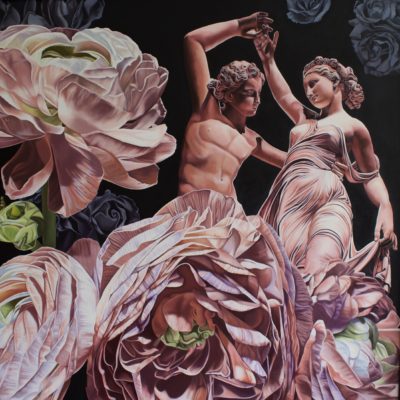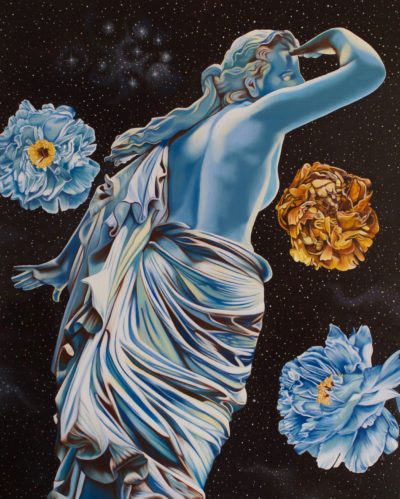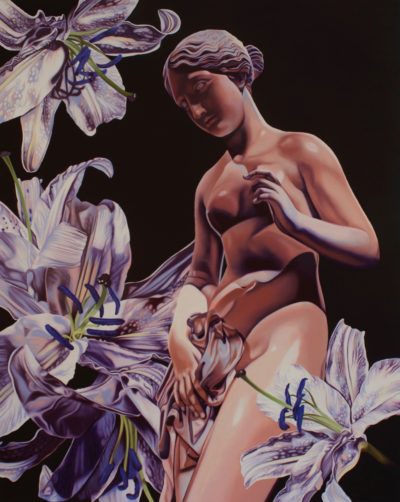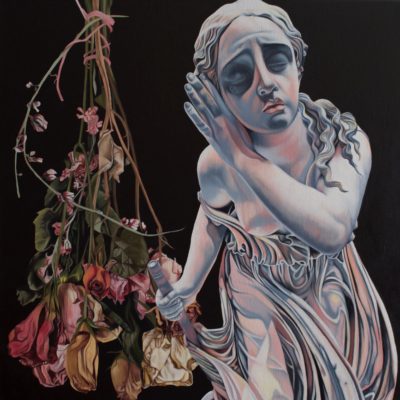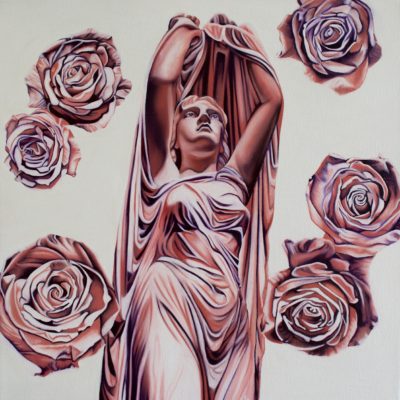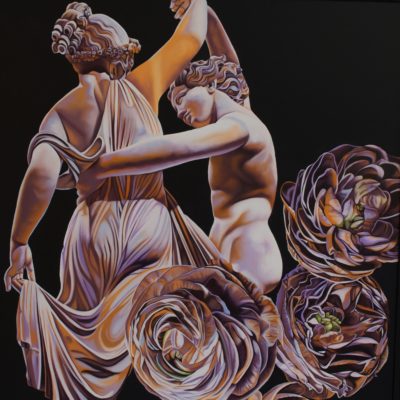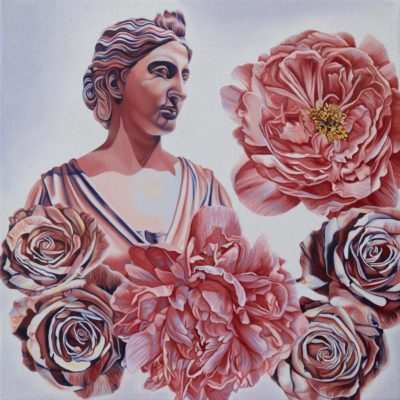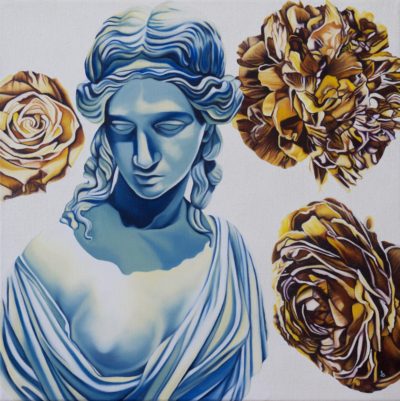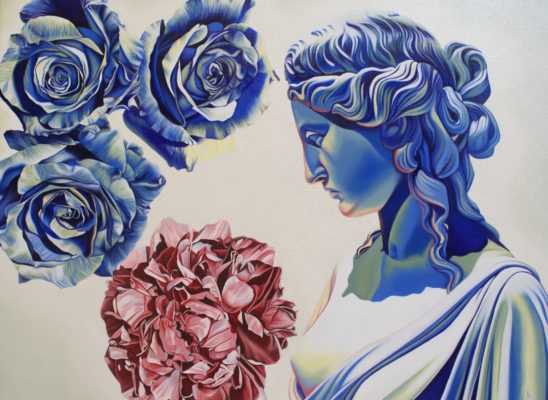Spotlight: Unset in Stone
Artist Statement
Stories from Classical mythology have pervaded European culture. My work seeks to address how mythology and the retelling of myths serve to reflect, reinforce, and influence our gender ideologies. Our perception of women is directly affected by how they are portrayed in art, from the stories and poems from antiquity to the way we see women and girls currently depicted in contemporary art and literature, television, and in advertisements.
The experience of being a woman has changed little throughout history. Before painting The Oppression of Flora, I read the story of Zephyr and Flora in Ovid’s Fasti. He writes, “Zephyr caught sight of me: I retired; he pursued and I fled; but he was the stronger, and Boreas had given his brother full right of rape by daring to carry off the prize from the house of Erechtheus. However, he made amends for his violence by giving me the name of bride, and in my marriage-bed I have naught to complain of.” Flora goes on to describe her marriage favorably in spite of its violent beginning, citing the colorful gardens her husband gave her, a perpetual spring of running water, and her new title, “Goddess, Queen of Flowers.” Botticelli later depicts the capture of Flora, then named Chloris is his painting Primavera (c. 1482). In this work, Chloris is shown attempting to flee while looking back at Zephyr, who is pictured swooping down from the sky in his successful attempt to abduct her. Her expression in Botticelli’s painting suggests the fear and worry one would typically associate with a kidnapping. In 1870, Giovanni Maria Benzoni, the Italian neoclassical sculptor, represented the couple in his sculpture Zephyr Dancing with Flora. His retelling of the myth focuses on the couple’s happy reunion, and not at all on the rape and abduction that preceded their marriage. This sculpture portrays the couple dancing together after an ordeal in which the Boreas, the north wind, kills Zephyr with an arrow and then abducts Flora. After Zephyr comes back to life on Mount Olympus, the Muses tie his wrist to Flora to prevent the two from being separated again. In my own retelling of this story, I chose to render a photo-realistic yet stylized version of Benzoni’s sculpture with oil paint on canvas, adding flowers to symbolize the violent beginning of their marriage. I often use flowers in my work to suggest themes such as shame, purity, and tragic love.
My work from a previous series of paintings has featured models that portray characters from Classical Greek mythology with contemporary attributes. For my recent series of paintings, Unset in Stone, I have focused on painting sculpture from Hellenistic Greece through the Neoclassical movements in an effort to question what is “set in stone” in regard to gender roles and how we perceive women.
 Brandi Read lives and works in Bahrain and Kalamazoo, Michigan. Her preferred medium is oil painting, but she sometimes includes installation works in her exhibitions. Read earned a BFA in painting, magna cum laude, at Western Michigan University School of Art in 2006. She has been awarded many scholarships, grants, and prizes for her work. Read has participated in solo, group, and invitational exhibits in cities across the United States, and is currently creating work for a solo exhibition to be on view at Greenville Center for the Arts in Greenville, North Carolina in June 2018.
Brandi Read lives and works in Bahrain and Kalamazoo, Michigan. Her preferred medium is oil painting, but she sometimes includes installation works in her exhibitions. Read earned a BFA in painting, magna cum laude, at Western Michigan University School of Art in 2006. She has been awarded many scholarships, grants, and prizes for her work. Read has participated in solo, group, and invitational exhibits in cities across the United States, and is currently creating work for a solo exhibition to be on view at Greenville Center for the Arts in Greenville, North Carolina in June 2018.


